Problem Solving Card Text
YGOPROdeck already has a numerous amount of articles on the topic of rulings and PSCT, or "Problem Solving Card Text". This one on "When" and "If" effects is an imperative must-read for most yugioh players, even if you're not designing custom cards. This Wiedergeburt article on general yugioh rulings is also extremely helpful. There's also a bounty of information on the Official Konami Blog. Regardless, here are some tips which you might find useful when writing custom card text.
Colons and Semi-Colons
The number one mistake I see when reading other people's custom cards is a distinct lack of colons. No, I'm not talking about bowel movements, I'm talking about punctuation. This is a Colon: " : ". This is a Semi-Colon; " ; ". When writing card text, these punctuation marks differentiate a condition, a cost, and an effect. Here's an example.
Does start a Chain
If this card is Normal Summoned: You can discard 1 card; draw 1 card.
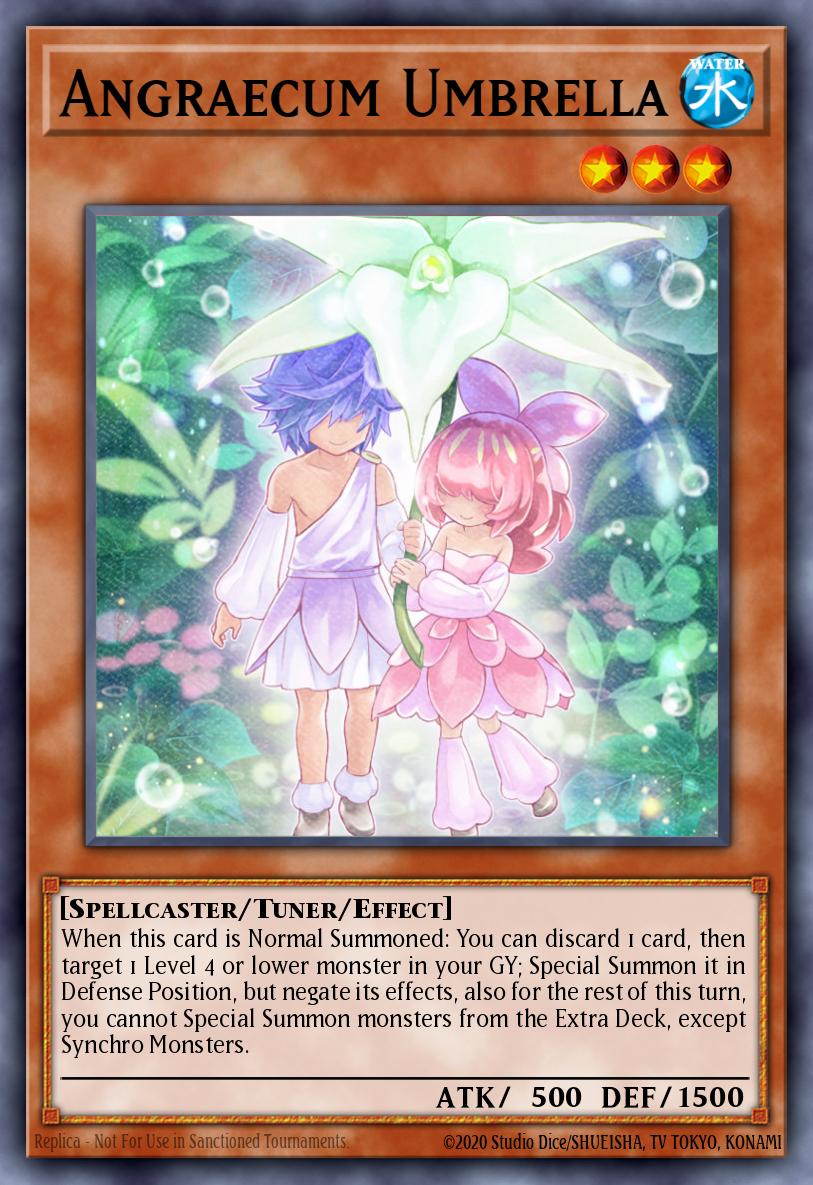
The condition comes before the colon. "When this card is Summoned:". This lets you know what requirements are needed to allow the rest of the effect text to resolve. In this case, the card needs to be normal summoned. Through the use of a colon, we also learn that the effect does activate, and that it starts a chain. Next up comes the cost; "You can discard 1 card;". You can tell that it's a cost because it comes before a semi-colon. Last up comes the effect itself - "draw 1 card". This is very different from the sort of effect text without punctuation, which might look something like this:
Does not start a Chain
If this card is normal summoned, you can discard 1 card, and if you do, draw 1 card.
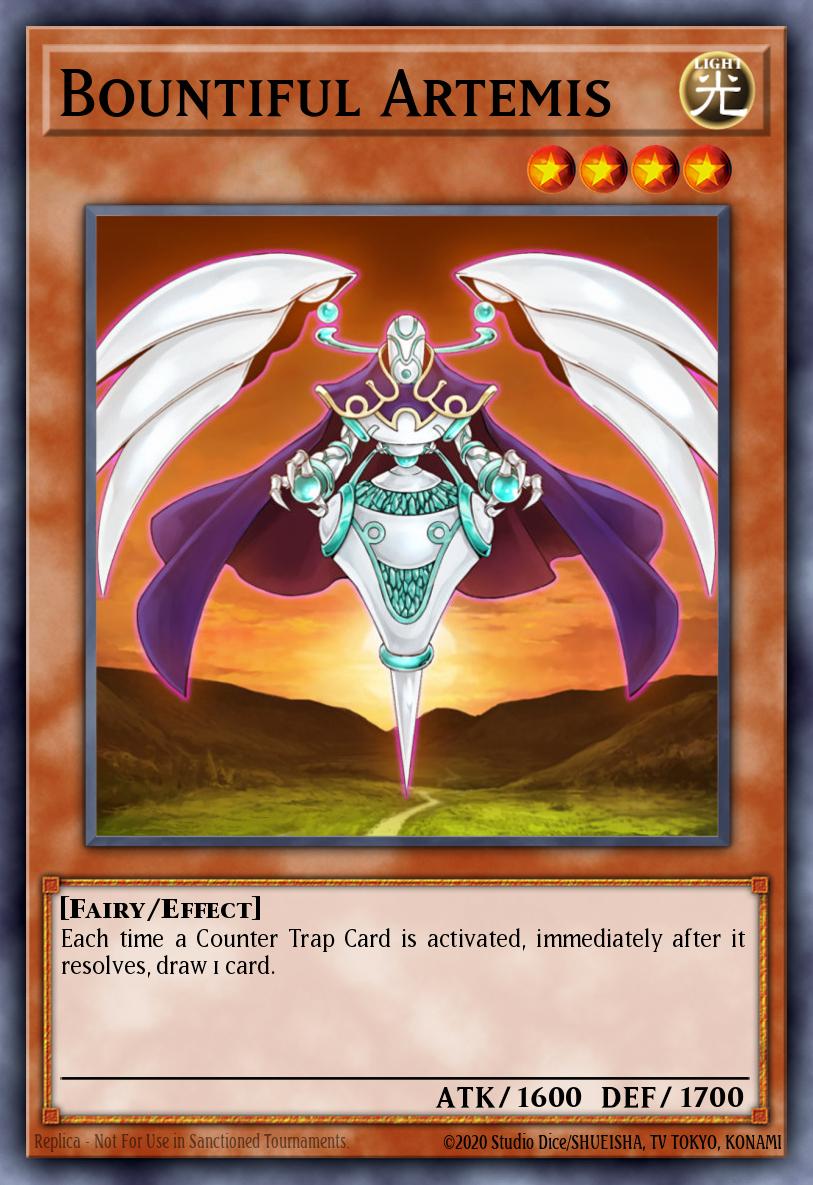
Since there is no colon here, this effect does not activate and does not start a chain. That means that your opponent cannot chain an Ash Blossom & Joyous Spring (or in fact, any card) in response to the effect. It also has no semi-colon, meaning that there is no cost. Although cards rarely lack a colon for this sort of effect (Bountiful Artemis being an exception), cards do often lack costs in this manner. "And if you do" or "then" clauses are often used to make an effect not include a cost - In this instance, discarding a card is an effect, not a cost, since it does not precede a semi-colon. This will make card effects like Shaddoll Dragon trigger, which is something to look out for. In general, make effects activate with a colon, and use costs as balancing mechanisms for the majority of your cards.
If in doubt, copy an actual card's text
I do this quite a lot. When an effect is seldom used in the game, but still exists within the rules template, it's easiest to simply copy the effect text from an official Konami card. For example, if you were designing a card which grants an additional normal summon, it'd be a good idea to copy the text from Knightmare Goblin or Gem-Knight Seraphinite. This way, you can guarantee that the wording will be correct!
Sharing Custom Cards
I'm going to be blunt here: Nobody wants to look at an archetype of 30 cards, each of which have 8 lines of text. If you're designing a set of cards, it's best to keep the complexity to a minimum, such that everything is pleasing to look at.
Thematic Effects
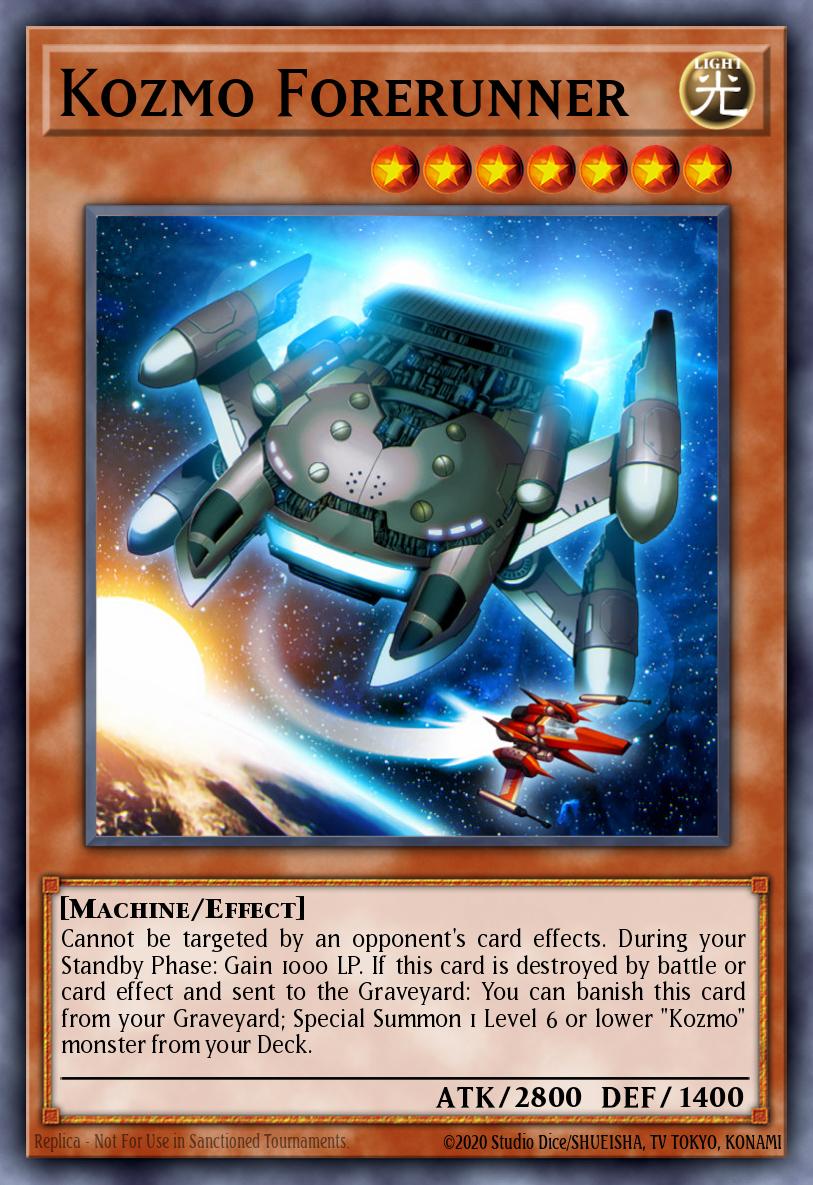
Including "Thematic Effects" in your custom cards is also a great idea, as it helps players quickly understand or guess what the cards and general theme of the deck does. By "Thematic Effects", I mean this: "A set phrase which is repeated over a number of cards in the archetype". Think of Kozmo, for an example. All of the Kozmo ships have the same sort of effect. All of the Kozmo pilots also share the same sort of effect. By utilizing this technique of card design, you reduce the amount that a new player needs to learn, and help to strengthen the identity of the archetype. Just by looking at a Kozmo card's art, you can already guess what half of the card does!
Keep effects brief
When designing custom cards in the modern Yugioh world, new card creators tend to slap a million effects all onto one card. This causes a multitude of issues, but isn't something to avoid entirely. The end effect of having extremely wordy cards is that it's difficult to remember exactly what the cards actually do. In addition, it often makes cards do too much, which can make them be too strong in actual gameplay. Instead of putting 4 effects all on 1 card, I generally prefer to see that 1 card has up to 2 effects, but search out a Spell or Trap which has the other 2 desired effects. Doing so adds more interesting gameplay and deck-building conundrums, and also allows the opponent to respond in more ways to your cards.
Unspoken Yu-Gi-Oh! Rules
There are a bounty of unspoken Yugioh rules which the game designers set themselves. When designing your own custom cards, these rules definitely don't have to apply, although they certainly help to make a card "feel" more like an official Yugioh card. Here are a few of them:
Monster ATK/DEF
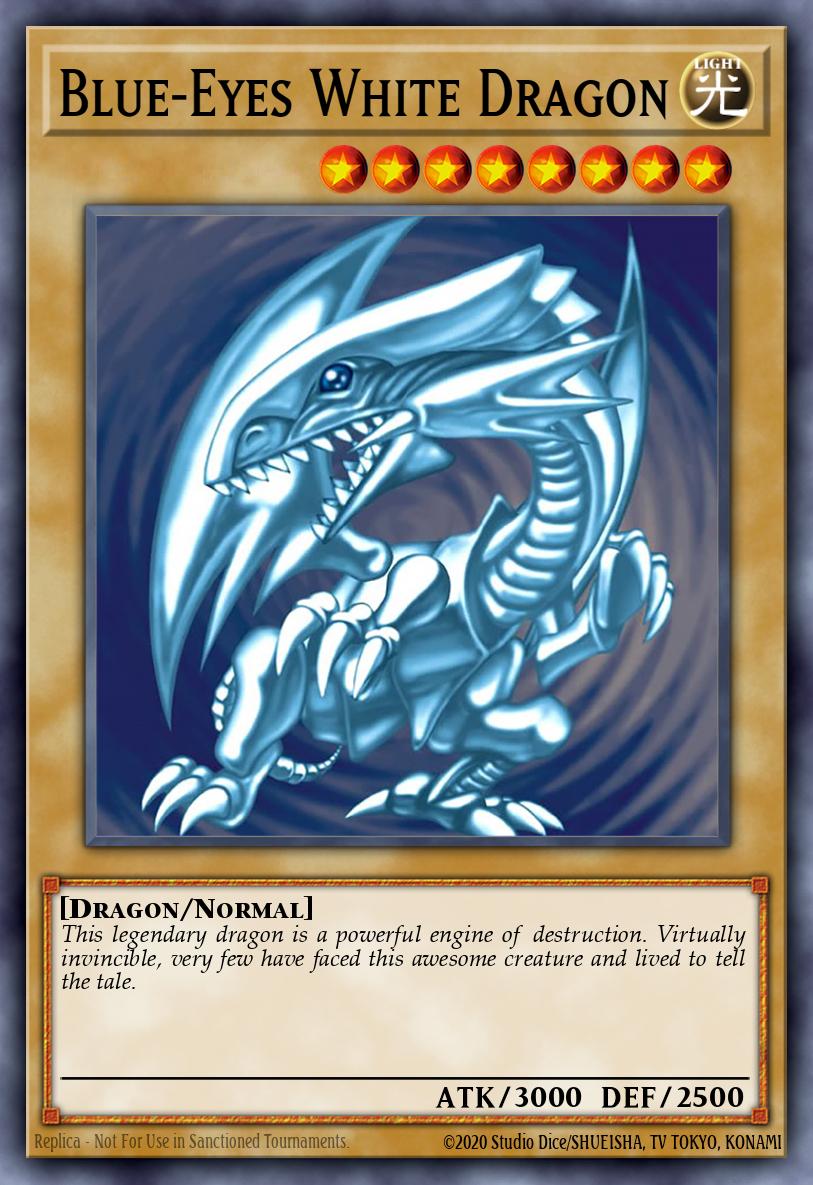
Did you know that the highest ATK of any Normal monster in the game is the legendary Blue-Eyes White Dragon? It certainly makes sense now that you do know. After all, it is a legendary dragon is a powerful engine of destruction. It's virtually invincible, and very few have faced it and lived to tell the tale. What does this mean when it comes to custom card creation?
Simply put, for a card to "feel" like something that Konami would make, any custom Normal monsters you design shouldn't have 3000 or more ATK. In addition to this, level 4 or lower main deck effect monsters don't have 2000 or more ATK, unless they have some kind of restriction. There also seems to be a "cap" on ATK, which is 5000. This is relevant for some cards which copy the ATK stat of other monsters.
The easiest way to find out whether or not something is of the "right" stat-line is to simply perform a quick search, and to see whether or not a monster with that much ATK/DEF already exists. If it doesn't, consider either putting a restriction on the card or lowering its base ATK/DEF.
Quick Effects
I'm very guilty of breaking this "unspoken rule" and only discovered it after talking to other custom card creators: Only Monster Cards have quick effects. Not a single Spell/Trap in the game, not even the pendulum effects of pendulum monsters, have quick effects. However, this doesn't mean that Trap Cards can't do things on the opponent's turn - That's specifically what they're designed to do! But you'd do well to look at some sneaky ways to get around this, namely cards like The Weather Cloudy Canvas, which give other monsters quick effects.
Custom Card Artwork
A picture speaks a thousand words. By using certain images, an archetype or individual card can transcend being just words, and metamorphose into something really special.
Better Quality Images
Are you using Duelingbook to make custom cards? The website is probably the best place to test them, but it doesn't crop your images for you. Instead it stretches them, which almost always causes them to look rather ugly. The best way around this is to use a free program like Paint.NET (or just good ol' Microsoft Paint) to crop them down to a square beforehand. If you're any good with Adobe Photoshop, you can also use it to augment your own images.
Which Image to choose?
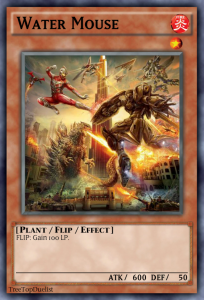 Don't do this. Art: dezygn
Don't do this. Art: dezygnImages give away a lot of information on the surface. For example, in the Magic: The Gathering card game, a creature with the "Flying" ability will always appear to be flying or levitating. Just by looking at the art, you can already guess what the card does. In Yugioh, it's usually possible to guess a card's card type and/or attribute just by looking at the art. Don't give a winged-beast monster the art of an ocean. Try not to give a small support monster the art of a titanic destroyer robot.
A nice technique I like to use for Pendulum Monsters is to make the art of the card face left or right: A low pendulum scale should look at a high pendulum scale. Because of this, it's easy to tell which scale a pendulum monster is. It also makes the board look groovy neat when you have 2 different scales in the pendulum zones.
Other Resources
Game design is a passion of mine, and I could go on all day - Instead of turning this article into a novel, i'll instead link you guys to some really useful game design resources. Mark Rosewater, designer of Magic: The Gathering, has some great podcasts on the MTG website. These go in-depth into card design, not just MTG design. There's also a subreddit for custom yugioh cards. It's not too large, but with the debut of custom cards on Duelingbook, it's sure to grow. Finally, I really enjoy the Extra Credits YouTube channel. They go into fantastic depth on all forms of game design, even CCG design!
Until next time (condition):
Stay Groovy (cost);
and comment any of your custom card designs below (effect)!




